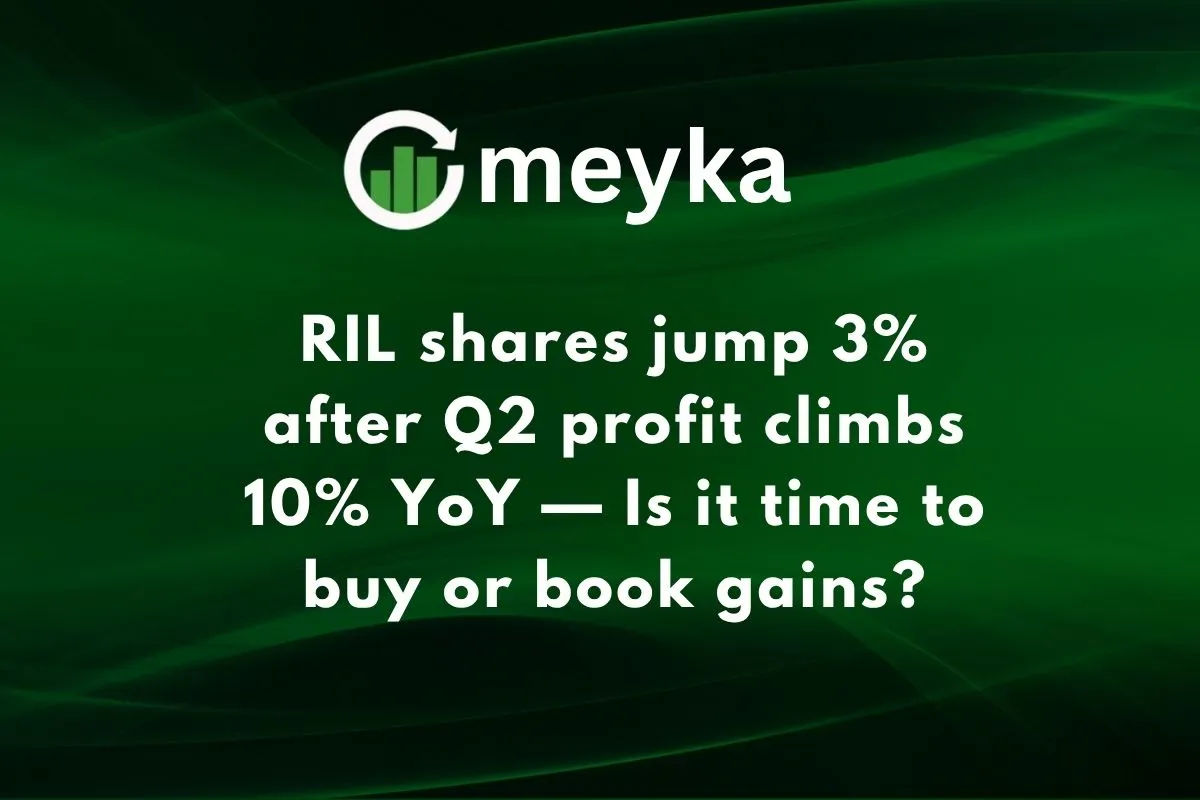RIL shares jump 3% after Q2 profit climbs 10% YoY Is it time to buy or book gains?
Reliance Industries Limited (RIL) has recently garnered significant attention in the stock market. On October 20, 2025, RIL’s shares surged nearly 3% following the announcement of its Q2 FY26 financial results. The company reported a consolidated net profit of ₹18,165 crore, marking a 10% year-on-year increase from ₹16,563 crore in the same quarter of the previous year. This positive earnings performance has sparked discussions among investors: Is it time to buy more RIL shares, or should one consider booking profits?
Q2 Performance Highlights
RIL’s Q2 FY26 results showcased robust growth across its diversified business segments. The company achieved a 9.9% year-on-year increase in gross revenue, totaling ₹2,83,548 crore. Key contributors to this growth included:
- Jio Platforms Limited (JPL): Revenue increased by 14.9% year-on-year, driven by industry-leading subscriber growth and sustained improvement in Average Revenue Per User (ARPU).
- Reliance Retail Ventures Limited (RRVL): Revenue grew by 18% year-on-year, with significant growth across consumption baskets, particularly in the grocery and fashion sectors.
- Oil-to-Chemicals (O2C): Despite global challenges, the O2C segment demonstrated resilience, contributing positively to the overall performance.
These results underscore RIL’s diversified portfolio and its ability to generate consistent revenue streams.
Market Reaction
The market responded positively to RIL’s Q2 FY26 results. On October 20, 2025, RIL’s share price opened with an upside gap at ₹1,440 per share on the NSE and touched an intraday high of ₹1,460.60 within minutes of the opening bell. The stock settled at ₹1,467.9, reflecting a 3.31% increase from the previous close. Analysts from major brokerages, including Nomura, Morgan Stanley, and Kotak Institutional Equities, expressed confidence in RIL’s growth prospects, citing strong retail performance, stable O2C earnings, and upcoming triggers from Jio’s tariff hike and new-energy ventures.
Factors Driving Growth
Several factors contributed to RIL’s impressive Q2 FY26 performance:
- 5G Monetization: RIL’s investment in 5G infrastructure has begun to yield returns, with increased data consumption and higher ARPU contributing to revenue growth.
- Retail Expansion: RIL’s retail segment continues to expand its footprint, with increased consumer spending driving revenue growth.
- Oil-to-Chemicals Recovery: The O2C segment experienced a cyclical recovery, supported by improved refining margins and increased demand for petrochemical products.
- New Energy Initiatives: RIL’s investments in clean energy projects, including solar and hydrogen ventures, position the company for long-term growth in the evolving energy landscape.
These factors highlight RIL’s strategic initiatives to drive growth across its business segments.
Risks and Concerns
While RIL’s performance has been commendable, investors should be aware of potential risks:
- Commodity Price Volatility: Fluctuations in global oil and gas prices can impact the profitability of the O2C segment.
- Regulatory Challenges: Changes in government policies and regulations, particularly in the telecom and retail sectors, could affect RIL’s operations.
- Debt Levels: RIL’s capital expenditure on new energy projects may lead to increased debt levels, necessitating careful financial management.
- Global Economic Conditions: Economic downturns or geopolitical tensions can influence consumer spending and demand for RIL’s products and services.
Investors should consider these risks when evaluating their investment decisions.
Conclusion
RIL’s Q2 FY26 results demonstrate its resilience and strategic focus across key business segments. The positive market reaction reflects investor confidence in the company’s growth trajectory. While potential risks exist, RIL’s diversified portfolio and investment in future growth areas provide a solid foundation for continued success. Investors should carefully evaluate their options and make informed decisions aligned with their financial objectives.
Disclaimer:
This content is for informational purposes only and is not financial advice. Always conduct your research.






